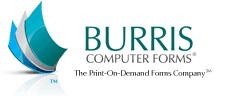Not sure how or where to recycle paper in your area?
by Raki Wright | Last Updated January 14, 2011Not sure how or where to recycle paper (or other products) in your area?
We stumbled upon a cool website…
The site is very easy to use and provides links to recycling information, by category. There is a brief description about the category, along with links to related articles. Users enter their zip code and voila!
“1-800-Recycling.com provides users with nationwide outreach to find recycling locations nearest to them (every zip code in the country is covered) for whatever it is they wish to recycle. Through its iPod App, 1-800-Recycling.com website and 1-800-Recycling phone service, users are directed to responsible recyclers of electronics, tires, oil, paint, glass, plastic, wood, mattresses, carpet, junk – almost anything that can be recycled. Electronic Recyclers International (ERI), the nation’s leading recycler of electronics and e-waste, is the parent company of 1-800-Recycling.com.” -Businesswire
See our previous posts to learn more about paper recycling and more
How can I learn more about recycling?
by Raki Wright | Last Updated December 3, 2010Q: How can I learn more about recycling?
A: Here are some links:
How to reduce paper waste by purchasing blank, print your own products
About our recycled products: What’s available?
Practical tips: how our office handles recycling
Learn the rules of paper recycling
What are the easiest products to recycle?
Recycling Comes to a Post Office Near You
How many times can you recycle a piece of paper?
What happens if I put the wrong thing in the recycling bin?
There is also an online resource called RecycleBank, which provides rewards for recycling and being environmentally conscious.
Image by: epsos
What happens if I put the wrong thing in the recycling bin?
by Raki Wright | Last Updated November 30, 2010Recycling is great for the environment. However, recyclers must take care when placing items in the bins. If a wrong item is placed into a bin, it can “spoil the whole bunch”?
Read this article which covers What NOT to Put in the Bin.
How many times can you recycle a piece of paper?
by Raki Wright | Last Updated October 29, 2010According to the technical association of the paper pulping and recycling industry, you can reuse old paper five to seven times. This sounds simple, but how can you tell how many times any individual cellulose fiber has been processed? Luckily, the fibers check themselves out when their time is done.
Paper is recycled by turning it back into its basic form – individual cellulose fibers – in big vats of water and chemicals. Young, studly fibers, on only their second or third go-rounds, maintain their long, springy form. Geriatric fibers are brittle and eventually shatter. These pieces are filtered out or skimmed off in the processing, before the new paper is made.
From San Diego Reader
Print Your Own Tip: Advantages of Duplex Printing
by Raki Wright | Last Updated October 27, 2010When you print your own, it’s good to duplex print because it is good for the environment, your wallet, and your filing cabinet:
- Reduces paper waste
- Saves paper
- Print outs takes up less space in your filing system
Duplex printing means that you’re printing on both sides of the paper. There are two ways to duplex:
- Manual Duplexing
- Auto Duplexing
Manual Duplexing is where you feed the paper into the printer twice in order to print on both sides. Auto Duplexing means you only need to feed the paper once and the printer will automatically print on both sides of the paper before it spits it out into the finished tray.
Not all printers can Auto Duplex, but you can Manually Duplex with most printers.
Microsoft® resources available:
*How do I know if my printer has duplex printing capability? Can I set my printer to do this automatically?
Recycling Comes to a Post Office Near You
by Raki Wright | Last Updated October 22, 2010Another way to recycle paper, before it even reaches your office, is to place it in the recycling bins available at post offices nationwide.
“Lobby recycling is an important part of the Postal Service’s conservation efforts, because it helps divert paper waste from landfills and helps our bottom line, making us greener and smarter.”
Photos of the recycling containers and a complete list of participating Post Offices can be found in the USPS green newsroom and at usps.com/green.
From USPS News Release: Recycling Comes to a Post Office Near You
What are the easiest products to recycle?
by Raki Wright | Last Updated October 8, 2010Learn the rules of paper recycling
by Raki Wright | Last Updated October 1, 2010Confused about how to start paper recycling?
We stumbled upon an article that goes over some of the questions a new paper recycler might have.
See our recycled products, tips on reducing, reusing, and recycling paper, and how our office handles recycling.
Recycling: Hold a Community Shred-It Day
by Raki Wright | Last Updated September 24, 2010Get inspired by a civic organization who holds a community event offering document shredding that will be recycled into other paper products. Proceeds will be reinvested in the community.
See our recycled products and tips on reducing, reusing, and recycling paper.
Recycled products
by Raki Wright | Last Updated September 22, 2010For those of you who pay attention to the amount of post-consumer recycled content that your purchases have, we’ve made it easier for you to locate our recycled products. Just look for the recycled logo next to the name of the product as you browse through our product categories.
